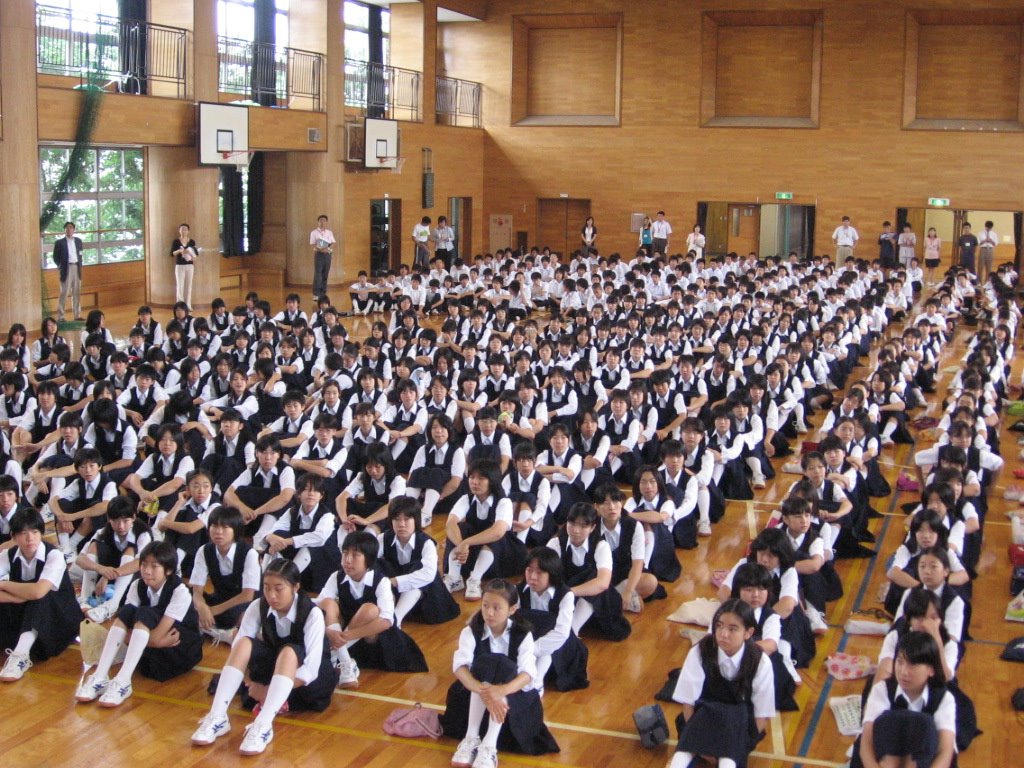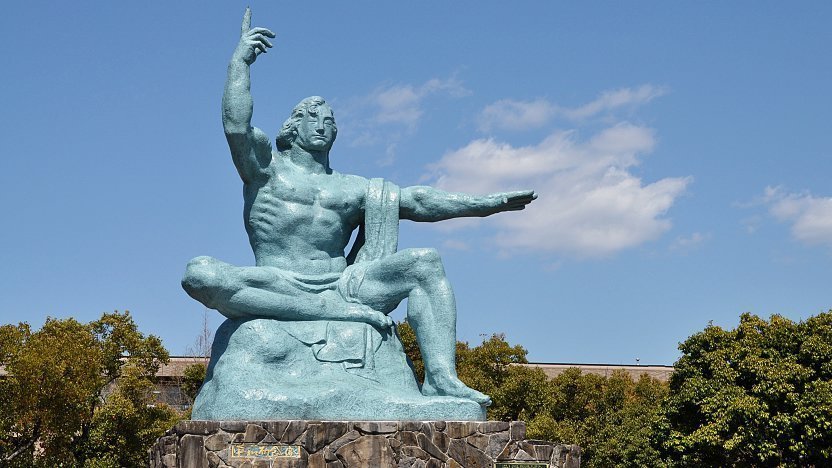Getting in touch with the power that drives the Universe...
In 2004 during my second teacher exchange program with Japan, I was able to visit the site of the first nuclear bomb attack in history. The national museum in Hiroshima is set up to take you on an increasingly sensitive journey through the historical, scientific and personal aspects of the bomb.
 In the ultimate gallery I was able to view a rusty, broken tricycle that had been buried with its owner, a 4-year-old boy, in the yard of the family home after he had died of radiation exposure. At the time of his death, the family’s pain had been too intense to share publicly. Many years later the boy’s father had decided to donate it to the museum in order to honor his son’s memory. I had never experienced such a historic, sensitive tribute to a child’s death in my own country.
In the ultimate gallery I was able to view a rusty, broken tricycle that had been buried with its owner, a 4-year-old boy, in the yard of the family home after he had died of radiation exposure. At the time of his death, the family’s pain had been too intense to share publicly. Many years later the boy’s father had decided to donate it to the museum in order to honor his son’s memory. I had never experienced such a historic, sensitive tribute to a child’s death in my own country.


The next year I was fortunate to become an adjunct faculty member of a junior high school in Daizafu-shi, Fukuoka, Japan for an entire summer session. I was engaged with the junior high students at the school. I felt a special kinship with them. I greeted the students each day alongside the principal and engaged the teachers daily in their faculty lounge. Using translators, I taught lessons in various subject disciplines and got to know students in their club and social activities. Even though I did not speak their language, we could "read" each other’s actions and faces. There was a special bond among us.
One of the most memorable activities of that period was to attend a yearly school assembly to commemorate the culturally significant death of a young teenage girl due to the circumstances of radiation poisoning after the Nagasaki nuclear bomb was dropped in August, 1945. The story had been immortalized through a popular, poignant book that was well known to the students. The assembly that day included a slide show of the book’s illustrations and a student-led recitation of the content. A few students even offered their personal perspectives about the book. Including my previous observations in Hiroshima, I continued to think about the ramifications of being in a culture on the losing-end of a major war. The mood was somber and reflective. Even though the ceremony was conducted in Japanese language, I could sense the sadness and loss of students and teachers relating to a peer that had died decades before. I was able to follow along in an English translation of the book as I sat quietly observing.
As I sat in this auditorium of perhaps 500 Japanese adults and teens, it crushed me to know that I was the sole representative of the nation who had been the victor over them, and indirectly contributed to the death of this young girl. It was the perhaps the loneliest moment I’ve ever experienced. I wanted to apologize and ease their pain, but as someone who was born after the bombings, how could I? How does one individual begin to apologize for a clash of cultures and civilizations?
Later that summer, I visited the Nagasaki Atomic Bomb Museum with one of my host Japanese teacher colleagues. Sensei (teacher) Arata was a perfect philosophical guide through the Nagasaki museum and memorials, although he could not bring himself to entering the museum. It’s not that I hadn’t yet learned facts about the history of the bombs; it’s that he was able to personalize the experience and attach my general knowledge to a specific life. He related his own junior high experience of visiting the museum and for the first time in his life learning about the tragedy that his nation had suffered. He’d left his school group for quite some time to regain his composure. He was devastated to learn about the pain his countrymen and family had experienced. His perspective on his life was forever changed.
As a scientist and history buff, I was aware of the technical aspects of the nuclear bomb attacks upon Japan. As a veteran, I knew about our difficult war experience with that country. But I had never had the privilege of learning about the personal effects of the bombs until I visited Japan and got to know some Japanese intimately. The trips to the bomb museums gave me a much-needed and re-calibrated perspective about the human experience of the bombs and war in general. At this time my own first grandchild had been born and this searing memory of a child’s painful death caused me anguish. I thought “How would I respond if this had happened to my own children or grandchildren?"
I was deeply moved and changed by these experiences. In teaching students and interacting with their teachers in Japan, Africa and India, I have come to believe that all students are within my sphere of concern, and many are within my sphere of influence. As I finished out my teaching career, I realized that the most impacting thing that I could do for my own students was to help them understand the similarities and differences they have with students from other countries. Not that other cultures are more “right” or “wrong” than our culture, just different. This was a motivating factor in my decision to create online interactive experiences between my classes and students and schools in other countries. It made me not just a good American educator, but a global educator. A God-blessed educator who used my skills and life experiences to be His blessing in a desperate world. I am humbled to bring this story to you.
“Be the change you wish to see in the world” said Gandhi. I prefer to say "Be the change GOD wants to see in this world."
I did.
Views: 51
© 2024 Created by Brad Fox.
Powered by
![]()

